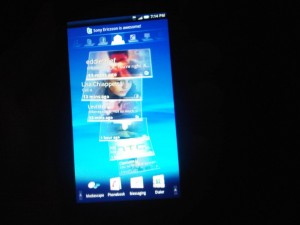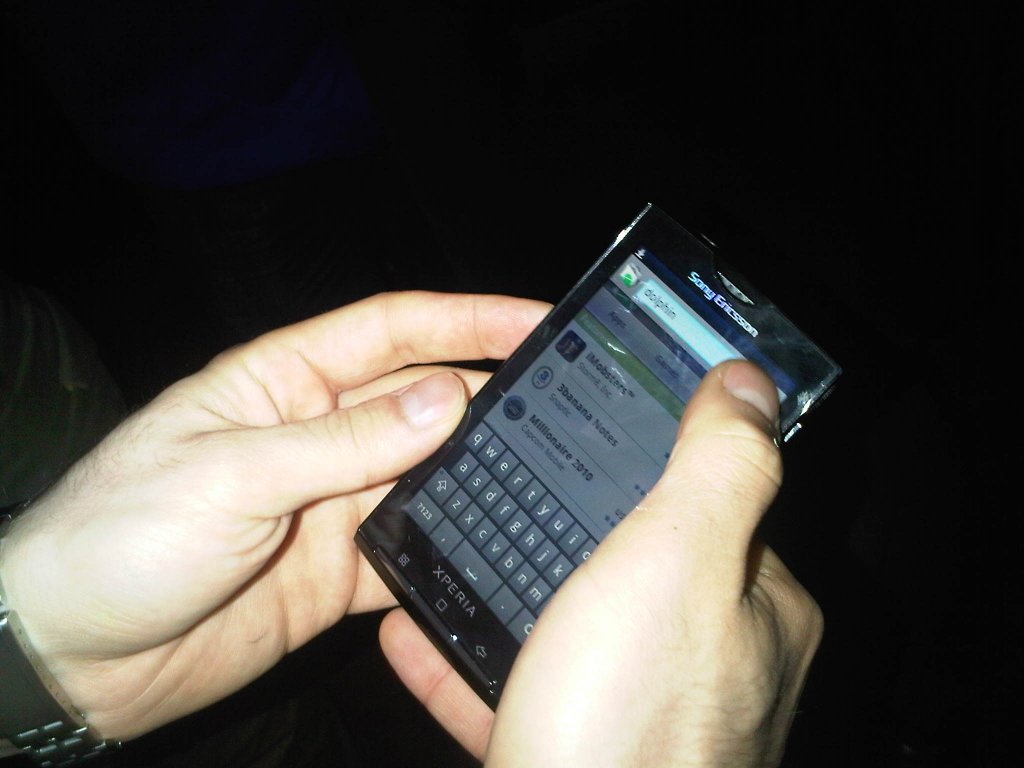Follow me on TwitterRSS Feeds
Live, a Day Later, From the Xperia X10 Launch
Last night, at the Revival Nightclub in downtown Toronto, Sony Ericsson and Rogers Wireless launched the Xperia X10 handset. It was a low-key affair, with Jay Malinowski of the Bedouin Soundclash performing a solo set after some introductions from various key players in both companies.
At its core, the event was about showing off the phone, and I have to say that, despite its older Android OS (it runs 1.6) the real winner is the screen on the phone, which is 4″ of beautiful, bright, accurate colour reproduction. I loved looking at it, especially next to my Nexus One, which, frankly, pales in comparison next to the Sony Ericsson handset.
 The other notable features of the phone are the social and media integration skins, that go over the stock Android platform, Timescape and Mediascape respectively.
The other notable features of the phone are the social and media integration skins, that go over the stock Android platform, Timescape and Mediascape respectively.
Timescape is basically a one-stop shop for all your social media aggregation as well as a summary of all your latest call/email/SMS activity. It’s very well designed, but the system bogs down when you have too much going on, as the app is quite intensive. Its psuedo-3D interface was obviously designed for looks over functionality, and when you have too many tweets in your timeline, or too many emails, flicking through your various messages slows right to a crawl.
The app is also limited by the fact that you cannot reply directly to events from inside the app; for example, if you see a tweet that you would like to reply to, it opens up Twitter’s mobile site in the browser. It’s quite a clumsy solution, and I hope this gets improved upon in the next release.
Mediascape is a similar design to Timescape but simpler: it, as suggested, aggregates all your media into one place. Music, video, etc., much like, umm, any capable media player.
The skin can be disabled fairly easily, and what’s left is a nicely-themed Android phone with a gorgeous screen and a decided lack of hardware multitouch. You’ve probably heard this already if you’ve been at all interested in the Xperia X10, but it will never support multitouch, as it is a hardware limitation. That is a huge disappointment and probably the thing that would keep me from using the phone as my Daily Driver. I rely on multitouch for everything from the browser to maps to pictures, and the phone feels less… intuitive… without it.
That being said, the design is gorgeous: it has a smooth, rounded back with an 8MP camera with LED flash that gets bright. There are three physical buttons at the bottom of the device: Home, Back, and Menu; a volume rocker on the left side and a dedicated camera button on the right side.
The 1GHZ Snapdragon processor really helps the phone feel smooth and snappy, and the Rogers rep claimed four solid hours of battery life from the device, though whether that is real-world usage or not remains to be seen.
Another nice addition to the phone, and something that will save you $100 in the long run, is that Rogers is shipping a 16GB MicroSD card with the device, meaning that for $50 less than an iPhone 3GS, you are getting the same amount of storage space with a faster processor and a beautiful 4-inch screen. Your call.
I look forward to testing out the device further when we get a demo from Rogers, but until then, check out their site for information.
| Print article | This entry was posted by GuruDaniel on April 13, 2024 at 2:14 pm, and is filed under Rogers Wireless, Sony Ericsson. Follow any responses to this post through RSS 2.0. You can leave a response or trackback from your own site. |


















